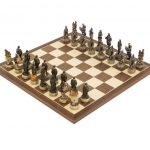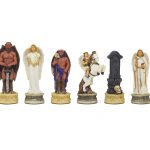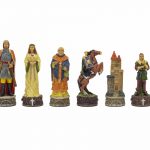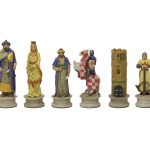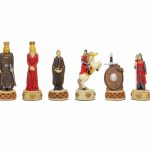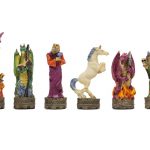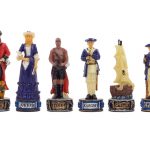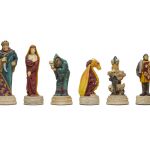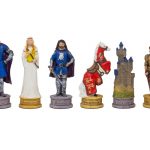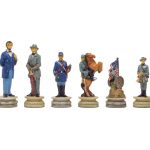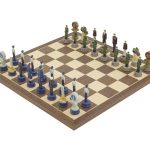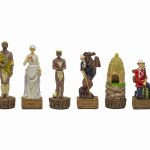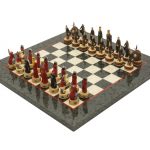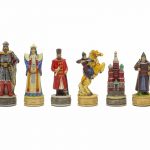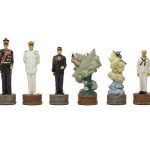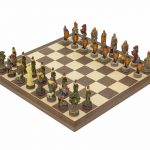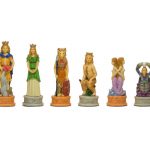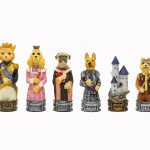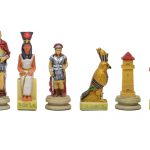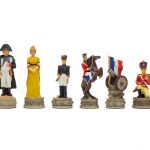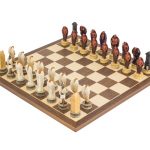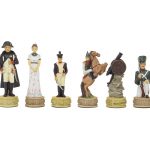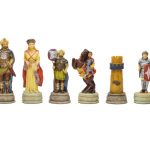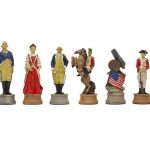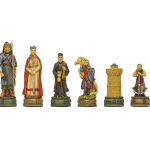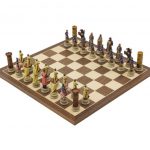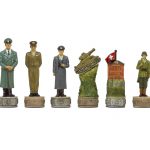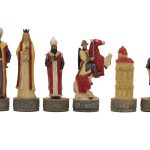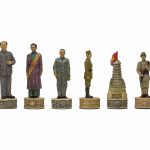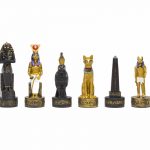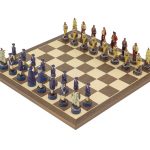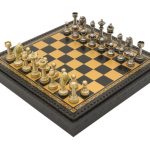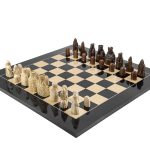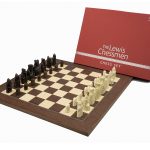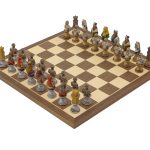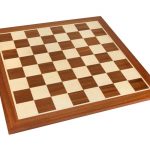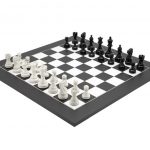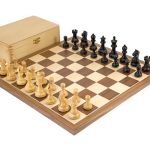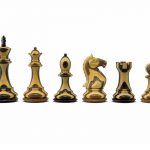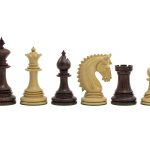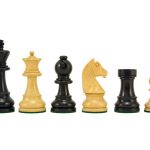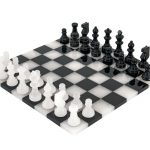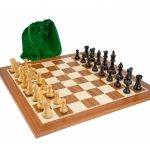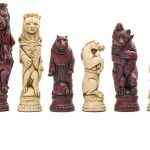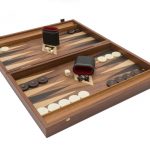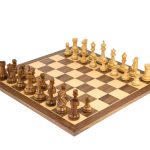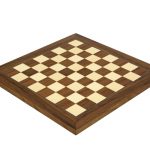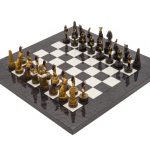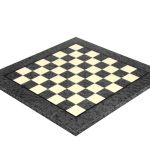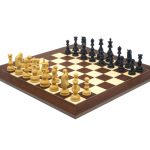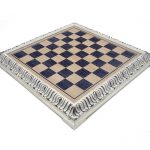Disclosure : This site contains affiliate links to products. We may receive a commission for purchases made through these links.
The Zombie Hand painted themed chess pieces by Italfama
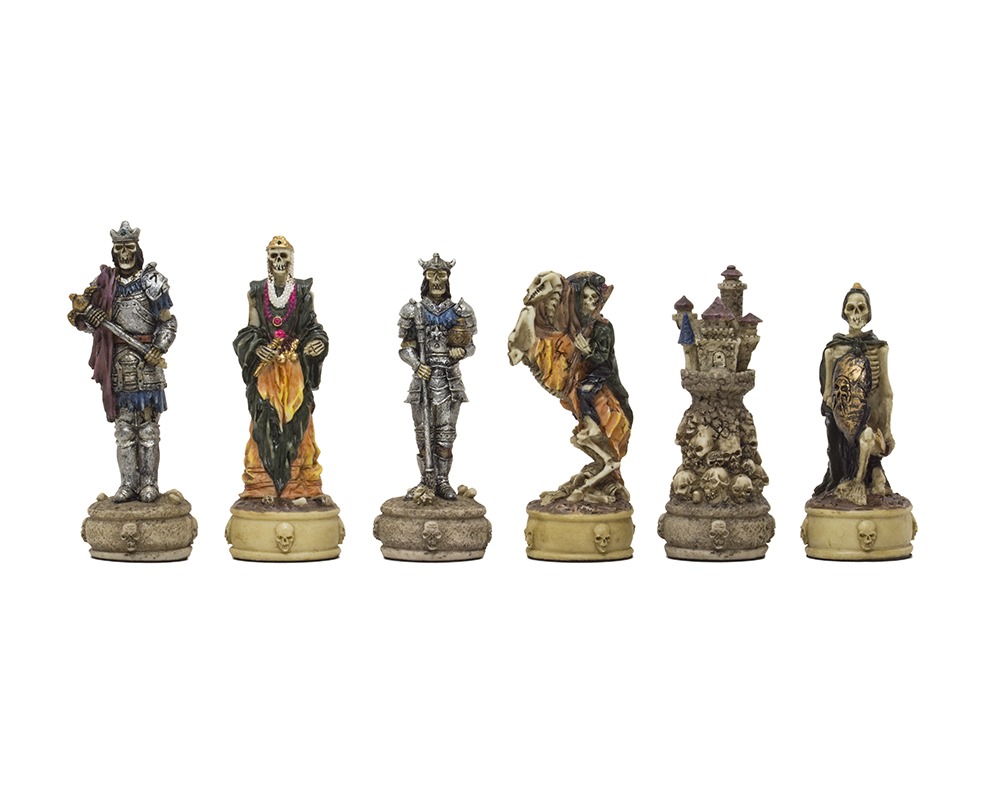
Ideal for a 16 inch board. Exquisitely ornate. Beautifully crafted in Italy. 3 inch king. Felted bases. THE PIECES Despite their gruesome skeletal theme, these chess men are incredibly ornate in detail. The armies are comprised of similar looking characters but defined by different colours. One army is adorned in blue and purple tones whilst the other is in more rustic hues of brown, green and orange. With their arrogant stature, the Kings are easily recognisable, although their Queens are equally intimidating. The bishop in the green army is a particularly gruesome creature clothed in a cloak with a skull capped staff. Even though they are draped in their colours, it does little to hide the fact that the horses too are mere skeletons, but, combined with rider, these knights are a force to be reckoned with. Maintaining the skeleton theme, the pawns are armed with swords and shields to defend their army but it is the the rooks in this set that are the most dramatic, with a fortress atop a large demonic skull on one side and a castle atop a mountain of skulls on the other. We have matched these grisly chess men with a superb quality 16 inch walnut and maple board from Spain to give you The Zombie Chess Set. With or without the board, this set makes for a superb gift for a zombie fan. THE HISTORY Fictional undead beings, created through the resurrection of human corpses, Zombies are most commonly found in fantasy and horror genre works. The term comes from Haitian folklore, where a zombie is created with a dead body through various means but most commonly through magic. Nowadays, zombies are more likely to evolve through science such as mental diseases, viruses, radiation and other scientific accidents, rather than the traditional magical influence. The English word “zombie” was first recorded in 1819. The Oxford English Dictionary deems the word as being of West African origin, and compares it to the words from the Congo: nzambi (god) and zombi (fetish). A sensationalised account of a writer who encounters Haitian voodoo cults resulted in The Magic Island by W B Seabrook being published in 1929. It was one of the first books to expose Western culture to the idea of the voodoo zombie. Since then, zombies have had a changing literary heritage, where they can be depicted as mindless unthinking henchmen under an evil spell. Subsequently, horror movies depicting ‘monsters’ who were hungry for human flesh or introduced the concept of them eating brains, were not described as Zombies in the film but merely given the title by the movie fans. Despite the macabre nature, the concept of Zombies continues to give the world endless entertainment, not only through television, cinema and book but also through the increasingly popular Zombie-cons.








